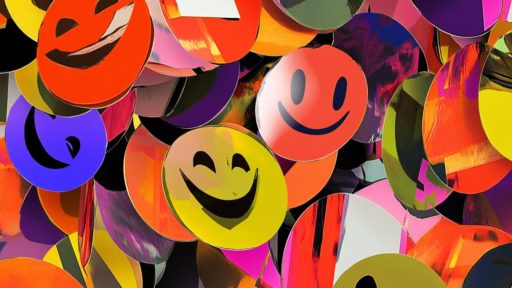Predictive analytics is changing how businesses use social media. Here’s what you need to know:
- It uses AI to forecast trends based on past data
- Companies using it are 2.2x more likely to exceed revenue goals
- 81% of social marketers say it’s key for influencer marketing
- 60% of marketers plan to use advanced analytics to link social media to business goals
How it’s used:
- Content creation: AI tools make posts 10x faster
- Personalized experiences: Platforms predict what you’ll like
- Smarter ad targeting: Spot likely buyers at the right time
- Better customer service: Staff up when more questions are expected
- Trend forecasting: Spot upcoming trends early
Quick Comparison:
| Feature | Old Analytics | Predictive Analytics |
|---|---|---|
| Speed | Slow, manual | Fast, automated |
| Focus | Past trends | Future predictions |
| Accuracy | Limited | Higher with AI |
| Cost | Lower upfront | Higher upfront, long-term gains |
| Flexibility | Less adaptable | Adjusts quickly |
Predictive analytics isn’t perfect. It needs lots of data, can be expensive to set up, and raises privacy concerns. But for businesses looking to stay ahead, it’s becoming a must-have tool in the social media toolbox.
Old-School Analytics
Social media teams used to rely on basic numbers:
- Follower counts
- Likes
- Shares
- Comments
These metrics were easy to track but didn’t tell the whole story. They showed how many people interacted with content but not why or how it impacted the business.
Think about it: a post with 1,000 likes might seem great. But if it didn’t lead to website visits or sales, was it really that valuable?
Old-school analytics had some big problems:
1. No context
Numbers without meaning. What good is 1,000 likes if they don’t help your business?
2. Slow reporting
Collecting data by hand took forever. By the time you had the numbers, they were already old news.
3. Limited insights
It was tough to connect social media activity to actual business goals. So what if you got more followers? Did it boost your bottom line?
"Social media is versatile, whereas traditional media, once published, is set in stone." – Public Relations Society of America
This quote nails it. Old methods couldn’t keep up with the fast-changing world of social media.
Here’s a quick comparison:
| Old-School Analytics | Modern Analytics |
|---|---|
| Vanity metrics | Engagement and conversion |
| Manual data collection | Automated reporting |
| Limited data sources | Multiple data streams |
| Reactive approach | Proactive strategy |
The game has changed. A Pew Research Institute study found that 30% of US adults now get news on Facebook, 11% on YouTube, and 8% on Twitter. Marketers had to step up their game.
Old-school methods still have their place for quick checks. But they’re not enough if you want to win in today’s social media world.
2. Predictive Analytics
Predictive analytics is like a crystal ball for your social media strategy. It uses AI and machine learning to predict future trends, user behavior, and content performance.
Here’s the basic idea:
- Collect data from everywhere
- Find patterns in how people act and engage
- Make educated guesses about the future
Let’s look at some real examples:
Content that hits the mark: RMIT University and Digital Health Cooperative Research Centre built software to predict health issues in aged care. Social media teams can use similar tech to create content people actually want to see.
Happy customers: A big telecom company used predictive analytics on customer surveys. They found out what was making people unhappy (like long wait times) and fixed it. Result? More satisfied customers who stuck around.
New products: A lawn mower company looked at social media chatter and surveys. They saw people were getting excited about electric mowers. So, they sped up their electric mower development and launched a green marketing campaign.
Predictive analytics isn’t just for the big players. Small businesses can get in on the action too:
| What You Can Do | How It Helps |
|---|---|
| Plan content | Figure out which posts will do well |
| Target ads | Find the right people for your message |
| Improve customer service | Spot problems before they happen |
| Launch products | Time new releases for maximum impact |
But it’s not all sunshine and rainbows. Here’s the good and the bad:
Good stuff:
- Hit the bullseye with your targeting
- Use your resources smarter
- Make customers happier
Not-so-good stuff:
- Needs tons of data
- Can cost a pretty penny
- Might make some people worry about privacy
"By 2026, one in three new apps will use AI for personalized and adaptive user interfaces. That’s a big jump from today, where only about 5% of apps use AI this way." – Gartner prediction
The takeaway? Predictive analytics is shaking up social media. It’s not perfect, but it’s a powerful tool to stay ahead in the fast-paced digital world.
sbb-itb-43d9647
Good and Bad Points
Let’s compare old-school analytics and predictive analytics in social media:
| Aspect | Old-School Analytics | Predictive Analytics |
|---|---|---|
| Data Processing | Manual, slow | Fast, automated |
| Insights | Past trends | Future predictions |
| Accuracy | Limited | Higher with AI |
| Scalability | Struggles | Handles big data |
| Cost | Lower upfront | Higher upfront, long-term gains |
| Flexibility | Less adaptable | Adjusts quickly |
Predictive analytics has its ups and downs:
Pros:
- Better decisions
- Smarter risk management
- More efficient
- Boosts sales and customer happiness
Cons:
- Expensive to start
- Needs lots of good data
- Privacy issues
- Possible algorithm bias
Real-world impact:
"Companies have seen unscheduled downtimes reduce by over 80% and customer buying propensity improve by over 60% – 80% through predictive analytics." – Riya Pahuja, ETCIO
But watch out:
"Without transparency and legal rules, predictive analytics risks bias, forced interpretations, and recommendations that could hurt society." – Riya Pahuja, ETCIO
To nail predictive analytics in social media:
- Use good, accurate data
- Know your goals
- Be open about data use
- Keep models up-to-date
- Mix AI smarts with human know-how
Wrap-up
Predictive analytics is changing social media. It’s not just about the past – it’s about seeing what’s next.
Here’s how:
1. Faster content creation
AI tools can create content 10x faster than humans. More posts, more often, tailored to user preferences.
2. Personalized experiences
Platforms predict what you’ll like before you do. Think Netflix with shows or Spotify with music.
3. Smarter ad targeting
Companies spot likely buyers and timing. Ads become more useful, less annoying.
4. Better customer service
Businesses staff up when they expect more questions. Happy customers.
5. Trend forecasting
Marketers spot upcoming trends early.
Real-world wins:
| Company | Action | Result |
|---|---|---|
| PepsiCo | Used predictive analytics for stock | Prevented stockouts, boosted sales |
| The New York Times | Personalized content | More traffic and engagement |
| Amazon | Recommended products | Better user experience, more sales |
Chris Penn, co-founder of Brain+Trust Insights, says:
"If you know how to predict, you can make money, save money, save time, and not get fired."
But it’s not all easy. Predictive analytics needs good data. It can be expensive to set up, and privacy is a concern.
For businesses starting out:
- Begin with a small pilot project
- Focus on data quality
- Watch privacy laws
- Combine AI with human expertise
Going forward, expect more AI and human teamwork in social media. This combo will create smarter strategies and more engaging content.
FAQs
How is predictive analytics used in social media?
Predictive analytics in social media is all about using smart algorithms to guess what users might do next. It’s like having a crystal ball for user behavior.
Here’s the deal:
- It looks at what content you like (dogs, anyone?)
- Figures out when you’re most likely to be online
- Helps show you ads you might actually click on
- Spots trends before they blow up
Chris Penn from Brain+Trust Insights puts it this way:
"In social media, this means using algorithms to analyze user behavior and predict what they might do next."
Check out how big players use it:
| Company | What They Do | What Happens |
|---|---|---|
| News Feed magic | You see stuff you care about | |
| Suggests who to follow | You find cool new accounts | |
| "People You May Know" | Your network grows |
Want to use predictive analytics? Here’s how:
- Start small
- Focus on what matters to your business
- Use good data
- Keep an eye on privacy laws
It’s not rocket science, but it can make a big difference in how you connect with your audience on social media.






